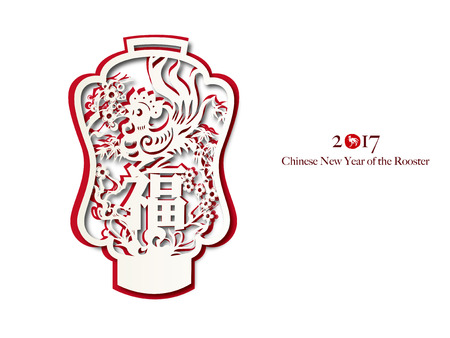Introduction to Feng Shui in the Modern American Workplace
Feng shui, an ancient Chinese practice focused on creating harmony between individuals and their environments, has steadily made its way into the mainstream of American office culture. While traditionally rooted in Eastern philosophy, feng shui has been embraced by a growing number of successful companies across the United States that are looking for innovative ways to enhance productivity, creativity, and employee well-being.
But what exactly is feng shui, and why is it gaining traction in American workplaces?
What is Feng Shui?
At its core, feng shui is about arranging physical spaces to promote positive energy flow (also known as “chi”). This involves thoughtful placement of furniture, mindful color choices, natural lighting, and the incorporation of elements like plants or water features. The goal is to create an environment that supports comfort, focus, and overall health.
Why Are American Companies Adopting Feng Shui?
Many modern businesses recognize that office design impacts employee morale and productivity. By integrating feng shui principles, companies aim to:
- Reduce stress levels
- Encourage creativity and collaboration
- Boost job satisfaction
- Create a welcoming space for both employees and clients
This approach aligns with contemporary trends in workplace wellness and holistic business strategies.
Key Benefits of Feng Shui in American Offices
| Benefit | Description | Impact on Business |
|---|---|---|
| Enhanced Productivity | A well-organized space reduces distractions and fosters focus. | Higher output and efficiency among staff. |
| Improved Employee Morale | Comfortable, aesthetically pleasing offices make people feel valued. | Greater job satisfaction and retention rates. |
| Positive First Impressions | An inviting space impresses visitors and potential clients. | Stronger business relationships and brand reputation. |
| Healthier Work Environment | Natural elements like plants can improve air quality and reduce stress. | Lower absenteeism and better overall health. |
The Growing Trend Among American Businesses
From Silicon Valley tech giants to boutique marketing firms in New York, more organizations are exploring how feng shui can fit into their company culture. As flexible workspaces, open floor plans, and employee wellness programs become standard, the adoption of feng shui principles reflects a broader shift toward holistic business practices that put people first. In the following sections, we’ll look at real-life examples of American companies successfully using feng shui to transform their offices—and their results speak for themselves.
2. How American Companies Incorporate Feng Shui Principles
Adapting Feng Shui to the American Workplace
Many successful American companies have found creative ways to bring feng shui principles into their office spaces. While staying true to the core ideas of energy flow, balance, and harmony, these companies also make sure that their designs fit local tastes and business needs. This unique blend results in workplaces that feel both comfortable and inspiring for employees.
Using Local Materials and Art
One of the most popular approaches is to use materials and artwork that reflect both feng shui concepts and American culture. For example, natural woods from regional forests, recycled metals, or sustainable glass can be used for desks, floors, and partitions. Companies often choose local artists to create murals or sculptures that symbolize growth, unity, or prosperity—common feng shui themes. This not only energizes the workspace but also supports community talent.
| Feng Shui Element | American Office Adaptation |
|---|---|
| Wood (Growth) | Locally sourced wood furniture and green plants |
| Water (Flow & Calm) | Indoor fountains or wall art depicting rivers/lakes |
| Fire (Energy) | Artwork with warm colors; strategic lighting |
| Earth (Stability) | Ceramic pots, stone tiles from nearby quarries |
| Metal (Clarity) | Recycled steel decor; metallic accents in meeting rooms |
Workplace Layouts Inspired by Feng Shui
Office layouts are another area where American companies apply feng shui. Open floor plans are designed to encourage positive energy flow—known as “chi”—while also supporting teamwork. Desks are arranged so that employees have a clear view of the entrance without sitting directly in line with the door, a classic feng shui tip to reduce stress and distractions. Breakout areas are placed near natural light or windows with views of greenery to boost creativity and relaxation.
Example: Tech Company in Silicon Valley
A well-known tech company redesigned its headquarters by mixing open spaces with quiet zones, adding living walls with plants native to California, and displaying motivational quotes as part of its art installations. The result was improved employee satisfaction and a noticeable uptick in creativity.
Balancing Traditional Feng Shui with Modern Needs
While traditional feng shui has specific rules, American companies often adapt these guidelines to match their own workplace cultures. Flexible workstations, standing desks, and collaborative zones show how feng shui can evolve within a modern office environment while still honoring its roots in balance and wellbeing.

3. Case Study: Tech Firm Transformation Through Feng Shui
How One Leading Tech Company Blended Feng Shui and Modern Office Design
Many American tech companies have been on the cutting edge of not just technology, but also workplace design. One standout example is a major Silicon Valley tech firm (for privacy, we’ll call it “TechForward”) that embraced feng shui principles to create a harmonious, productive office environment. By collaborating with feng shui consultants and architects, TechForward aimed to boost both employee satisfaction and productivity.
The Challenge: Low Morale and Productivity Slumps
Before adopting feng shui, TechForward faced issues common in fast-paced tech environments—stress, burnout, and declining creativity. The management team sought an innovative solution that would address not only physical space but also employee well-being.
The Solution: Integrating Feng Shui Principles
TechForward’s leadership worked with feng shui experts to redesign key elements of their headquarters. Here’s how they combined ancient wisdom with modern office trends:
| Feng Shui Element | Implementation at TechForward |
|---|---|
| Desk Placement | Desks were repositioned so employees faced the door, encouraging a sense of control and focus. |
| Natural Light & Plants | Large windows maximized daylight; indoor plants improved air quality and introduced calming green energy. |
| Color Schemes | Balanced color palettes were used to energize collaborative spaces (with reds and oranges) and calm focus zones (with blues and greens). |
| Clutter-Free Zones | Minimalist storage solutions reduced clutter, supporting mental clarity and reducing stress. |
| Water Features | A small indoor fountain was installed in the lobby to symbolize flow and attract positive energy (“chi”). |
Results: Measurable Improvements in Workplace Culture
The impact of these changes was quickly felt throughout the company. Employee surveys conducted six months after the redesign showed notable improvements:
| Metric | Before Feng Shui | After Feng Shui |
|---|---|---|
| Employee Satisfaction Rate | 67% | 88% |
| Reported Stress Levels (lower is better) | 7/10 | 4/10 |
| Productivity Index* | Baseline 100% | 115% |
*Productivity Index is based on internal performance tracking tools.
The Takeaway for American Workplaces
This case shows how integrating feng shui into a modern American office doesn’t mean abandoning innovation—it means enhancing it. With thoughtful design choices rooted in both tradition and contemporary needs, companies like TechForward demonstrate that employee happiness and business success can go hand-in-hand.
4. Case Study: Creative Agency Enhances Collaboration and Wellness
How a Leading American Creative Agency Used Feng Shui Principles
One inspiring example comes from a well-known creative agency based in New York City. As the company grew, they realized their open-plan office design was actually causing distractions and stress among employees. To address this, they partnered with a feng shui consultant to redesign their workspace with a focus on creativity, wellness, and team collaboration.
Key Feng Shui Elements Integrated into the Office
| Feng Shui Element | Implementation | Benefits Observed |
|---|---|---|
| Natural Light & Plants | Large windows uncovered, indoor plants added throughout work areas | Boosted mood, reduced stress, improved air quality |
| Collaborative Zones | Circular tables and soft seating in communal areas | Encouraged teamwork, sparked spontaneous creative sessions |
| Color Psychology | Used blues and greens for calmness, pops of orange in brainstorming rooms | Enhanced focus, energized idea generation spaces |
| Clutter-Free Desks | Cable management, storage solutions, weekly desk clearing rituals | Supported mental clarity and productivity |
| Balanced Layouts | Main entrance repositioned for energy flow; desks arranged to avoid back-to-door placements | Fostered sense of security and openness among staff |
Employee Feedback and Measurable Outcomes
The agency conducted surveys before and after the feng shui redesign. Staff reported feeling more energized and less fatigued at work. Creative output increased by 18% within six months, and there was a noticeable drop in sick days taken. Team members also mentioned that informal collaboration became more frequent and natural thanks to the new shared spaces.
Highlights from Employee Responses:
- “I love the greenery! It makes coming to work feel refreshing.”
- “The new layout makes it so much easier to brainstorm ideas together.”
- “I feel like Im able to focus better without all the clutter.”
The Takeaway for American Businesses:
This case demonstrates that incorporating feng shui elements isnt just about aesthetics—its about supporting well-being and productivity in meaningful ways. For creative agencies or any collaborative teams, simple changes inspired by feng shui can make a real difference in how people feel and perform at work.
5. Lessons Learned and Practical Tips for American Businesses
Key Takeaways from Successful Feng Shui Office Designs
The case studies of American companies that embraced feng shui principles reveal some common threads and valuable lessons. Whether it was a tech startup in Silicon Valley, a New York marketing agency, or a wellness brand in Austin, these businesses saw benefits ranging from improved employee morale to increased productivity and even higher client satisfaction. Here’s what stood out:
- Embracing Openness: Open layouts and the strategic use of natural light helped foster collaboration and creativity.
- Balance Matters: Blending elements like wood, water, metal, earth, and fire created harmonious spaces that employees enjoyed spending time in.
- Intentional Desk Placement: Placing desks to face doors or open spaces helped team members feel more secure and focused.
- Decluttering is Key: Organized workspaces promoted clearer thinking and reduced stress levels.
- Cultural Sensitivity: Companies respected American cultural norms while integrating feng shui, ensuring changes felt authentic rather than forced.
Actionable Insights for American Businesses
If you’re interested in applying feng shui principles to your office space, start small and build on what works for your unique company culture. Here are practical tips inspired by the featured companies:
| Feng Shui Principle | Easy Application Tip | Business Benefit |
|---|---|---|
| Natural Light & Plants | Add more windows or indoor plants | Mood boost & improved air quality |
| Desk Positioning | Avoid having desks face walls; orient them towards doors or windows if possible | Increased focus & sense of control |
| Decluttering | Create regular “clean desk” days; provide storage solutions | Less stress & better organization |
| Color Harmony | Use calming colors (like blues and greens) in decor or wall paint | Smoother workflow & reduced anxiety |
| Flow of Movement | Avoid blocking pathways with furniture; keep entryways clear | Easier collaboration & positive energy flow |
| Cultural Fit | Select feng shui elements that resonate with your team’s values and local customs | Higher engagement & authentic workplace culture |
Getting Started: A Simple Checklist
- Walk through your office—notice areas that feel cramped or dark.
- Talk to employees about which spaces help them feel most productive.
- Pilot one small feng shui change (like adding plants or rearranging desks).
- Gather feedback and adjust as needed.
- Celebrate improvements and keep building on your successes!
Remember:
You don’t have to transform your entire workspace overnight. By taking inspiration from these successful American companies, you can create a more vibrant, welcoming, and productive office—one step at a time.

